- Todd Campbell
- http://education.uconn.edu/todd-campbell/
- Professor
- Promoting lifelong STEM learning through a focus on geospatial technology and community engagement
- http://nrca.uconn.edu/students-adults/index.htm
- University of Connecticut
- Chester Arnold
- Director
- Promoting lifelong STEM learning through a focus on geospatial technology and community engagement
- http://nrca.uconn.edu/students-adults/index.htm
- UConn Center for Land Use Education and Research...
- Cary Chadwick
- Geospatial Educator
- Promoting lifelong STEM learning through a focus on geospatial technology and community engagement
- http://nrca.uconn.edu/students-adults/index.htm
- University of Connecticut
- Laura Cisneros
- http://www.lauramariecisneros.com/
- Assistant Extension Professor
- Promoting lifelong STEM learning through a focus on geospatial technology and community engagement
- http://nrca.uconn.edu/students-adults/index.htm
- University of Connecticut
- David Dickson
- Extension Educator
- Promoting lifelong STEM learning through a focus on geospatial technology and community engagement
- http://nrca.uconn.edu/students-adults/index.htm
- UConn Center for Land Use Education and Research...
- Nicole Freidenfelds
- Visiting Assistant Extension Educator
- Promoting lifelong STEM learning through a focus on geospatial technology and community engagement
- http://nrca.uconn.edu/students-adults/index.htm
- University of Connecticut
- David Moss
- Associate Professor
- Promoting lifelong STEM learning through a focus on geospatial technology and community engagement
- http://nrca.uconn.edu/students-adults/index.htm
- University of Connecticut
- Jonathan Simmons
- Gradate Student
- Promoting lifelong STEM learning through a focus on geospatial technology and community engagement
- http://nrca.uconn.edu/students-adults/index.htm
- University of Connecticut
- John Volin
- http://www.nrme.uconn.edu/Faculty_and_Staff/Volin.php
- Professor, Natural Resources and Vice Provost for Academic Affairs
- Promoting lifelong STEM learning through a focus on geospatial technology and community engagement
- http://nrca.uconn.edu/students-adults/index.htm
- University of Connecticut
Public
Choice
Choice
Public Discussion
Continue the discussion of this presentation on the Multiplex. Go to Multiplex









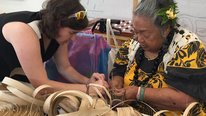
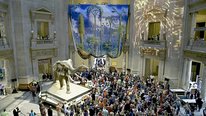
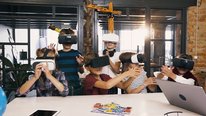
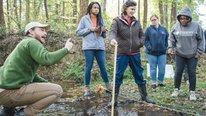
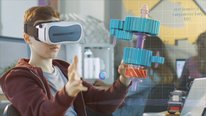
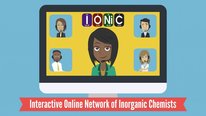
Nicole Freidenfelds
Visiting Assistant Extension Educator
Thank you so much for visiting our presentation on Designing for Intergenerational Community Conservation! We are excited to share the story of our program, Conservation Training Partnerships (CTP), with a broader audience and gain valuable feedback.
CTP promotes lifelong STEM learning through a focus on conservation, geospatial technology and community engagement. We represent an innovative collaboration between the natural resource and education departments at the University of Connecticut. Our goal is to engage youth and adults in intergenerational teams to apply conservation science and geospatial technologies in the design and implementation of authentic conservation projects that benefit their communities.
Our educational research seeks to understand how these innovative partnerships can support STEM learning and the development and maintenance of STEM identities. To date, our research and experiences have led us in crafting specific design principles and communication pillars that we have worked to embed into our workshop materials and follow-up support throughout the program. As we begin our fourth year of CTP, we are especially interested in discussions surrounding:
Kate Goss
Kristin Flaming
David Clark
Leigh Peake
Laura Cisneros
Karen North
This is exactly what I am trying to get to happen in my community in Houston, TX. And the schools that my grandchildren attend in Spring Branch ISD. I find their homeschooling lessons are not challenging and they spend too much time on games and social media. Would like to see this a required part of accountability for schools to make it happen. See https://knorth.edublogs.org/science/trees/ for what I am trying to do, as it has become a priority. The house next door to me may be next to cut down trees and take away my peace in the backyard, where I am sitting now. Have you made this part of education policy in your state? Are you collaborating with any university in Houston? Thanks for this work!!
Nicole Freidenfelds
Visiting Assistant Extension Educator
Thanks, Karen!
I actually used to live in Houston and appreciate your efforts to increase CS competency there. We are currently only collaborating with people and organizations in or very close to Connecticut, though we envision our program expanding beyond state boundaries in the future.
Good luck!
Jeffrey Ram
It's amazing that you've been able to participate in so many projects across the state. Are these pre-existing projects that your students intern with or has your project started these 70 projects de novo? If generated de novo, how did you do that? Did you use monetary incentives or ? What does your research show are the best motivaing factors? Have you documented the age ranges of participants?
Chester Arnold
Director
Thanks for the encouraging comments, Jeffrey. I am from the training side and will leave it to my educational research colleagues to answer your questions about motivating factors and age range. On the community projects: the overwhelming majority of them are de novo. In fact, a good part of the two-day workshop is devoted to having the adult-teen teams zero in on a project idea, and then flesh out their ideas. We have created templates of various general types of projects (water sampling, invasive species work, etc.) that help to guide them through the types of things that they have to consider when planning their project. These are available in the Project Resources section of the Program Materials page on our website. Also, we have a Story Map that gives them a good feel for the projects and includes examples of past projects. No monetary incentives, the adult participants are mostly conservation volunteers of some kind and are highly motivated on their own. As to the students, we have tended to attract those most interested in science/natural resources -- not surprising -- and it is one of our greatest challenges to attract students that may not think of themselves as being interested in science. Thanks for your interest and for your great work in Detroit!
Chet Arnold
Kate Goss
Nicole Freidenfelds
Jeffrey Ram
That's terrific and amazing! We'd love to bring some geospatial mapping projects to Belle Isle--a great project even for fifth graders (the focus of our project) if we can get them teamed up with some adult facilitators/volunteers that we have at the Aquarium and Belle Isle Conservancy. I will bring your Program Materials and Story Map pages to the attention of our project leaders.
Chester Arnold
Todd Campbell
Professor
Hi Jeffrey,
I'll add to what Chet shared previously drawing from our research. Our participants range in age with teens starting at age 13 and adults up in their 70s. Related to motivation to participate, we have found in our research that past positive conservation and outdoor experiences and interests lead to many teen participants engaging, while adult participation seems motivated by connections/interests and concerns for environmental and conservation issues. Because our research is framed by notions of identity and we recognize the interplay between interests and identity, our first design principle is 'Connect the project to the experiences and interests of both partners'. We work to elicit participant interests early in our project planning templates so that intergenerational groups can design projects that draw on their interests and existing resources as they make progress on their conservation projects. Hope this additional information is helpful. Thanks for your interest in our work.
Collegially,
Todd Campbell
Kate Goss
David Clark
Congratulations that you've reached such diverse participants and in so many locales across your state. It's a great concept to apply something foreign to most, like geospatial technology, with real world environments that everyone can understand, with an outcome of increased interest in STEM, while pursuing vital goals like conservation training.
Chester Arnold
Chester Arnold
Director
Thanks for the kind words, David. Our original concept was that the teens would bring their (seemingly) innate facility with technology to the table, and be cross-pollinated with the adult volunteers, who would bring their passion for conservation and local action. I will let the researchers elaborate but I feel that, notwithstanding a lot of variation among teams, this is what for the most part occurs. What we need are some of the spectacular dissemination techniques that you've employed in your project! Do you think some of your techniques could be applied to small local projects with less exotic landscapes than the arctic?
David Clark
Hi Chester,
Have you tried having your younger participants communicate via cell phone videos and social media, etc? Local newspapers and TV stations are usually keen to document innovative programs on their home turf once they learn about them. Maybe local public schools have science programs that would like to become involved. And state-based environmental/conservation organizations might also like to acknowledge your work on their websites, publications, etc.
Cary Chadwick
Geospatial Educator
Hi David,
We have encouraged some teams to create engaging media to disseminate their project findings. Several project teams have done this successfully by authoring story maps, a way of combining media and maps in an interactive website. A few examples here: beavers; microburst impact on plants; Q River virtual tour ; birding. We could probably do a better job connecting these final projects with local media outlets to spread the word further. In addition to presenting their work at a professional conference at the culmination of their project, several teams have also presented their project work to their local municipal commissions, town meetings or to conservation groups. Getting high school science programs or student groups involved is a great idea. We have had quite a bit of success working with the Connecticut Land Conservation Council, both as a way to recruit adult participants from the many land trusts in Connecticut and by way of recognition of the conservation work that our participants have done across the state.
David Clark
Bradley Allf
Really fabulous video and concept, this is some great work going on at UConn. I had a simple question: how do you recruit for the project to create these intergenerational teams?
Cary Chadwick
Geospatial Educator
Hi Bradley, I'm on the technical teaching side of this project, but I'll take a stab at this and the project coordinator can chime in if she gets a chance. Recruitment can be tricky, especially because we aim to pair the intergenerational teams based on geography to make it as easy as possible for them to work together after the workshop on a project in their community. Teen recruitment usually starts with targeted outreach in public and private schools in the region of the state where a particular workshop is being held. We rely on relationships we have built with teachers and school administrators through this and other related programs. The project coordinator will do in person visits to schools to highlight the project and answer questions with students, teachers and staff. Adult recruitment is done through targeted outreach via email listservs, tabling at conferences and events, and direct contact with conservation organizations. Teens and adults are paired and then usually we have a few teams that require extra effort to find a teen or adult match for a given area. It is a lot of work! But, it has gotten a little easier as the program has matured and built on previous successes. Hope that helps! Feel free to follow up with additional questions. If I can't answer them, I'll pull in the project coordinator.
Kate Goss
David Dickson
Extension Educator
Thanks Bradley. Recruiting is tough as we operate on two tracks. For the youth participants we do a lot of outreach to schools and teachers by phone, email, and presentations. For the adults, we reach out primarily to land trust volunteers and municipal staff to help us get the word out. We also promote the program through other trainings we do through other outreach efforts, such our UConn Extension-based Geospatial Training Program. The biggest challenge is then in matching up an interested student with an adult in the same geographic location. In some, cases students recruit their teachers or their parents to do the project with them.
Nicole Freidenfelds
Visiting Assistant Extension Educator
I'd like to echo what Cary and Dave said about recruiting. We mostly try to connect with students through school contacts (teachers, counselors, etc.), but it's difficult to know how many teens we're actually reaching. Getting into schools to give presentations can also be tough because of teachers' (and students') busy schedules.
As far as recruiting adults, we heavily advertise the program through environmentally-related listservs (land conservation, local conservation commissions, outdoor education, GIS, etc.) and reach out to other groups that might have interest, such as garden clubs. As Cary mentioned, we are lucky to have built a strong network of conservation organizations over the past few years, and even have several adults who participate in the program multiple years.
John-Reid Ryan
This project seems like it has made quite an impact. 17 different projects across the state is very impressive. Myself and my group in Virginia are working on developing citizen science projects for our kids (6th and 7th grade) in the coming years. We have been working on the idea of including multiple age groups together on projects. Regarding the stream monitoring and water quality work your students did. Are there any specific methods or instructions you pulled from to teach them? For the most part with our project we pulled from personal knowledge but a better way to streamline the process would be appreciated. Thank you.
David Dickson
Extension Educator
Thanks for the interest John. Our intergenerational teams have actually completed over 65 projects thus far over the 3 years of our grant! As for water quality, we do an exercise during the workshop and have developed a template for teams to design their own water quality project. The workshop exercise uses epicollect5 (an excellent & free field data gathering platform) to collect observational data about a local water body, identify potential environmental conditions that may impact stream health, and do a basic assessment of invertebrates in the stream. The form we developed walks them through what information to observe and collect. The learn as they collect different bits of info. You can view the data we collect in the workshop here. We focus on high schoolers, but I think this could also be done with younger ages.
Kate Goss
John-Reid Ryan
Thanks for your response. I did not realize your program was up to 65 projects over 3 years. I appreciate you sharing the resources as that will help us a lot.
Preeti Gupta
Director of Youth Learning and Research
Thank you presenters for all of this great convo. Could you talk a little more about some of your current challenges with recruitment? Are you able to get the types of diversity you want? Are you seeing any patterns in terms teams that are faster as getting started compared to those that take a little longer or need hand-holding?
Nicole Freidenfelds
Visiting Assistant Extension Educator
Great questions, Preeti!
We covered some of the recruitment challenges above, but to dive a little deeper, I would say we try to recruit more heavily in geographic areas closer to the different workshop locations each year. This typically gives us a good mix of folks from across a rural-urban gradient. The diversity of our teen participants moderately mirrors that of Connecticut as a whole, but we struggle with attracting adults from groups historically underrepresented in STEM and environmental fields to the program.
I am new to the Program Coordinator position and haven't actually helped any teams get their projects started (yet!), but I would say that it most likely comes down to communication between teen and adult partners. Some adults have never worked with teenagers before and it can be challenging when expectations are not initially established or reestablished. We provide training and resources during the workshops (e.g., working together reflection prompts), but the time we can devote to communication is limited. Fortunately, though, we are currently working on creating a set of Communication Pillars to better help guide communication between our participants as they progress through the program.
Leigh Peake
I love this conversation about recruitment and supporting the intergenerational teams. We will take this lesson and think about it in our citizen science work. I wanted to point out a project not represented in the Showcase called Arctic & Earth Signs that combines indigenous elder knowledge with western science acquired through citizen science protocols. I'm curious whether you've looked at all at this kind of potential communication within your teams -- the intersection of different knowledge systems as teams are working on projects? And do teams last? Do they continue to communicate?
David Dickson
Extension Educator
Thanks for sharing the information about your citizen science work, Leigh. I love that approach. We have often thought in our work about having our teams contribute to a common research project. Considered doing it this summer given Covid 19 restrictions on our existing workshop approach. Maybe we'll have to think about that in the future! Thanks.
Amanda Gunning
This is such an inspiring project! The multi-generational aspect is a wonderful approach and I wish we would see more projects like that in our society. It truly benefits everyone.
Nicole Freidenfelds
Visiting Assistant Extension Educator
Thank you, Amanda!
Todd Campbell
Professor
Thanks Amanda for your encouragement. We appreciate the opportunity to support and study the multi/intergenerational work of our teams as they work to make a difference in their local communities. And, we are constantly considering advice from our advisory board in thinking about how we might develop resources that can support more work/projects like this in our society as you mentioned.
Todd Campbell
Professor
Leigh-thanks for sharing about your citizen science work. I can appreciate the connectedness of the work you are doing to what we are doing and we will continue to explore your site and resources. Also, thanks for sharing the Arctic & Earth Signs resources. As a research team, we have read and very much appreciate the work of Megan Bang and others related to intergenerational learning, especially familial, and ways her group supports participants to draw indigenous knowledge as they engage in community and place-based science. It has made us consider and work to support our participants to draw on their resources, as pieces of their knowledge systems, our participants bring to their partnership work through intentional scaffolds in our templates. However, we recognize that we certainly have much to continue to learn about related to the intersection of different knowledge systems, so we appreciate the resources you have shared.
In relation to your question about 'do teams last/continue to communicate', we haven't been able to engage in longitudinal work to date that would allow us to make claims about the extent to which teams stay in touch outside of when teams with histories of collaboration come to our work (e.g., a teacher and student with a history of collaboration and aspirations of project work beyond work with us; families who participate).
Nickolay Hristov
Ph.D.
Great project and video! How do you assess the impact on the two groups participating in these projects? Is there an opportunity at the end of each “cycle” for the groups to report out or communicate what they have found to the other groups in their cohort? Much like a bookend to the two-day workshop at the beginning? While the adults have already likely landed in their chosen careers, the teens could very much be influenced based on these immersive experiences. How have you captured that impact to date?
Nicole Freidenfelds
Visiting Assistant Extension Educator
Thanks for the questions, Nickolay! I can respond to some of these and will leave others to my colleagues in education to answer.
We have begun compiling and analyzing data on the impact of our participants' conservation projects, to the environment, their community and through social capital gained. For example, the number of properties mapped, number of invasive plants removed, and number of products created, such as educational booklets, field keys, etc. You can see more details in this poster presented by Laura Cisneros at last year's North American Association of Environmental Education conference.
As far as an opportunity for teams to communicate what they accomplished, many of them choose to showcase their projects at one of two regional conferences that take place at the end of the program each spring (Connecticut Conference on Natural Resources and Connecticut Land Conservation Conference). Most teams present their projects as posters, but others create ArcGIS StoryMaps, videos, etc. We cover the cost of printing posters and conference registration. Unfortunately, both conferences were cancelled this year because of COVID-19. However, we hosted a virtual conference for our program participants, and it was a big success.
Todd Campbell
Professor
Hi Nickolay . . . I'll add to what Nicole shared related to our research on the impact the project might be having on our teen and adult participants. At the beginning of our project we developed, refined, and published a conservation science and technology identity instrument/survey to explore our participants historical identities in relation to conservation science and technology and how these identities might be influenced by participation in our two-day workshops and their longer community projects. This publication can be found here: https://onlinelibrary.wiley.com/doi/full/10.1111/ssm.12401 In this piece, we identified early evidence of the validity and reliability of our measure and have begun to document evidence of the strengthened identity of participants as a result of the workshop. We have since collected additional data that continues to reveal the promise of our survey and teen and adults participation in this conservation work. We believe this work complements the qualitative investigations we are engaged in to better understand and unpack the nuances of intergeneration work, especially when considering identity (the extent to which our participants see themselves and are seen by others as capable of contributing and participating productively in conservation work). Thanks for your interest!
Martin Storksdieck
Director
Fascinating project and lovely video - thanks for sharing!
I also want to come back to the recruitment and matching. What criteria, other than proximity, are you using to match adults with teens? Are these always groups of two or are there larger groups? The video always shows large groups but that might be because you shot footage at the workshops. Given the potential for friction: what have you learned about conflict and mis-matching? How do you resolve those?
And back to recruitment: From the description above it seems that you need to do a lot of recruitment to get participants. Or do you do this work, and then there is higher demand than you can supply? If much recruitment is needed, what do you know about self-selection and its influence on ceiling effects we so often find in environmental and conservation education projects (i.e., folks are already on the top of scales and cannot move higher)? Sorry for the many questions, but it is such a fascinating project, it invites curiosity.
Laura Cisneros
Assistant Extension Professor
Thanks, Martin, for all the great questions. I'll begin answering them, but invite our education research colleagues to add to my answers.
First and foremost, we provide a lot of flexibility in how the teams are formed: (1) some teams may apply together, and (2) some teams will be matched up by us (program staff) before the program. Most often we match up our teams rather than the former. To match a teen with an adult, we ask a series of questions on our short online application. Below is a description taken from our application:
Before attending the CTP workshop, we will pair you with a teammate. Teams will consist of at least one teen and one adult. The goal is for each team to carry out a service-learning conservation project together after the CTP workshop. We will take into account the following to help determine teams: (1) where you live, (2) your interests and (3) your time availability.
The types/size of teams that are formed are also very flexible. At a minimum, there is at least one teen and at least one adult per team. But based on participant request, we have teams that might have multiple teens and/or multiple adults, although we do aim to have the groups be 5 people or less. In some instances, we find this allows teens and adults some comfort if they participate with a friend when partnering with other "new" teammates. In the video footage, there were scenes with multiple teams working together or discussing brainstorming project ideas with other teams at the workshops, but teams are often 2-3 people, with fewer having 4-5 people/team.
We do put a lot of effort into recruitment, especially to recruit participants from underrepresented groups in STEM into the program and reach new communities throughout our state. Fortunately, we are able to accept 75 participants per year, so we accept almost everyone that applies, which we see as key to make the program open to everyone that has an interest in participating.
And regarding the ceiling effect, our program is free, but it is a summertime "choice" activity for high school teens that requires a commitment to complete the community project during the school year. Being a choice activity, it is not surprising that our participants come in with a strong conservation science identity. From our pre-surveys we have found that teens and adults have stronger conservation science identities than technology identities. Since the focus of the workshop is on learning geospatial technologies to support conservation science, this seems logical. Our original hypothesis was that adults would enter the program with stronger science identities than the teens, but that the teens would have stronger technology identities. Data from the first two years of the program show some support for this. Adults scored significantly higher in science competence and performance than teens, while teens scored significantly higher in self recognition of technology. There were no significant differences in any of the other identity constructs (e.g. science external recognition, internal recognition, and ways of seeing and being; and technology competence, performances, external recognition and ways of seeing and being). One interesting thing to note is that teens and adults had very high science ways of seeing and being, a construct that represents attitudes, values and behaviors that result from participating in a STEM field. The highest score possible for this construct was 16 and the pre-survey mean for all participants was 14.93. While the score increased to 15.21 in the post survey, the increase was not significant. The other three constructs compared pre to post (e.g science competence and technology competence and ways of seeing and being) all significantly increased.
Catherine Haden
How are you inviting reflection? How might the participants reflections be revealing of impacts?
Nicole Freidenfelds
Visiting Assistant Extension Educator
Hi Catherine,
Thank you for your question! At the end of each program session in March, our external evaluator (Horizon Research Inc) conducts a focus group with our teen participants and interviews with our adult participants. They then provide us a detailed report that we use to better understand the impacts of the program on our participants and make modifications going forward.
Laura Cisneros
Assistant Extension Professor
Thank you Catherine for your questions. To add to Nicole's response: the program culminates with many of our participants showcasing their project work at one of two professional conference poster sessions. The conferences are optional but we've had great attendance by our participants. At the conference we hold a closing ceremony to reflect with the group on their overall experience. Through the development of their conference poster or end product and the closing ceremony, participants have opportunities to reflect on their own impact in their community as well.
From the evaluation surveys, focus groups and interviews, we've also learned about the impact of the concepts and technology we impart but also on how the intergenerational partnerships have impacted the participants themselves.
Jaymee Nanasi Davis
Nice program and video. The high school student and adult mentoring is such a necessary aspect! Also, the number of participants is quite impressive.
I'm so curious about virtual conference... was it were there any synchronous components? Are there any other evolutions (that's what I'm calling them) that you've needed to make to adapt your program during this time of COVID? Particularly, in the video I heard the use of cell phones as tools/apps that student use as part of your program. In Hawaii, there are some students that live in areas that do not have internet connectivity... so we've been exploring ideas on how to reach them.
Nicole Freidenfelds
Visiting Assistant Extension Educator
Thank you, Jaymee!
The virtual conference was completely synchronous. It was scheduled on the same day that one of the regional conferences was supposed to have taken place, and which many of the participants had already planned to present their projects. We promoted the virtual conference on our social media and through listservs, and opened up attendance to basically anyone.
There was a morning and afternoon session, each about two hours long. We used Webex as the platform since we have an account with them through our university. As the host, I shared on my screen an image of each team's poster while they spent about 10-20 minutes explaining their project to the audience. At the end of each presentation, teams addressed the questions/comments that audience members had typed into the chat box. I recorded both sessions and edited the recordings into separate videos of each teams' presentation.
It was a really great way for participants to still be able to share all the work they had put into their projects, even if not in person. I think they got a lot out of the experience, and I am so thankful we were able to pull it together with fairly short notice.
Because of COVID, we have decided to conduct the workshop portion of this year's program entirely online, which will definitely pose some new challenges, particularly the loss of face-to-face instruction and engagement. We are still hoping, however, that our new cohort of participants will be able to carry out conservation projects together, in their small teams, practicing social distancing guidelines.
I appreciate the recognition that some participants may lack access to technology. I have looked into renting laptops, but haven't found a solution yet for those without internet connectivity. I don't know if public libraries will be a possible option when our workshops run in July. I'd love to hear what ideas you've come up with.
Kristin Flaming
Your video is motivational to all generations to be active in your community and environment. The program itself crossing many boundaries that will positively impact the environment for generations to come. Great job on the major impact in such a short amount of time.
Todd Campbell
Professor
Thanks Kristin for your positive comments. We appreciate the change to do this work and to share with colleagues like you nationally, while also learning from others.
Viviana Vazquez
Great initiative and program! I think it will do well in making sure our future generations are interested and continue to be interested in wildlife management and conservation. It looks like the participants had a lot of fun and learned so much, definitely something they will always carry with them. Thank you for sharing!
Nicole Freidenfelds
Visiting Assistant Extension Educator
Thank you so much, Viviana, for your kind remarks :)